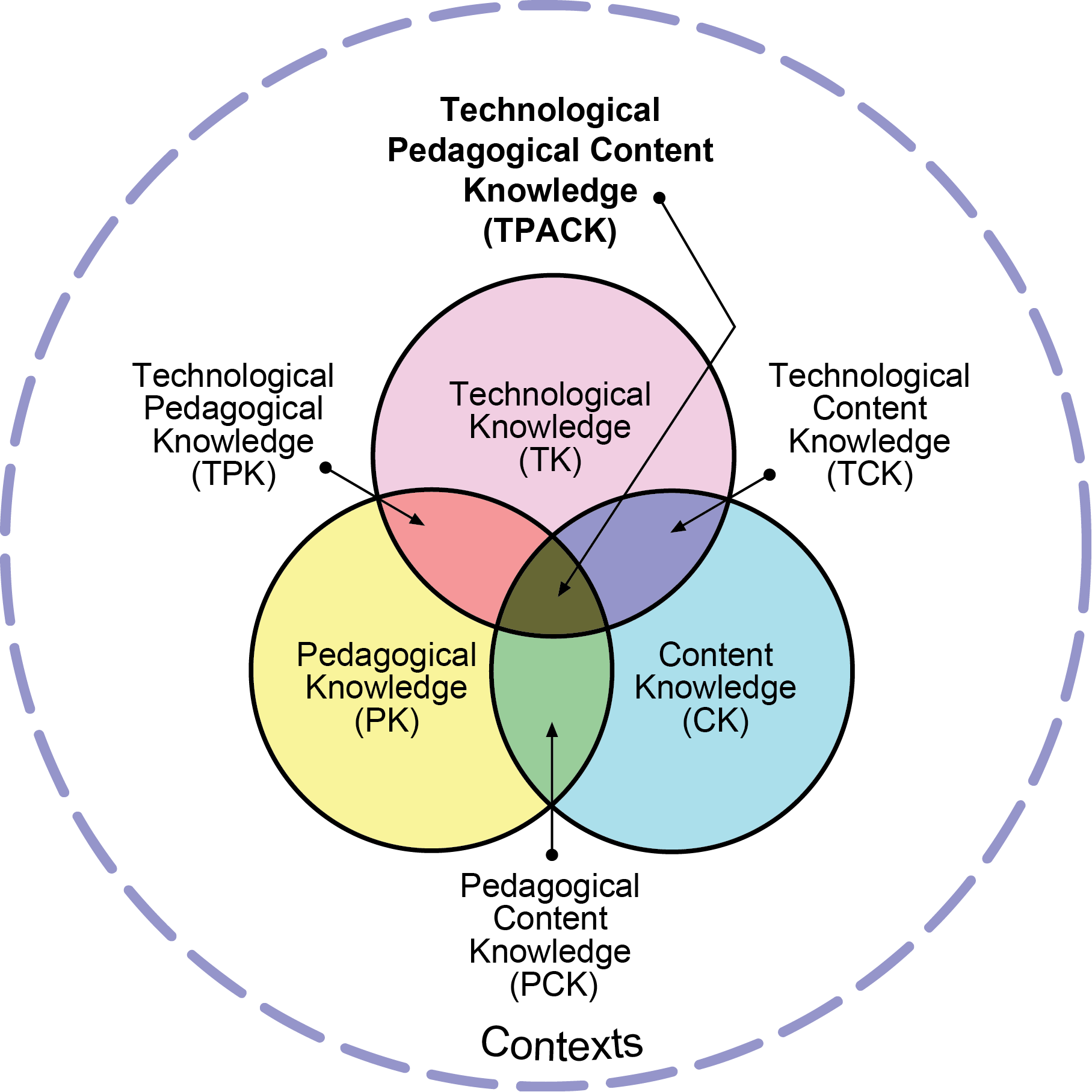Alber, R. (2011). Are You Tapping into Prior Knowledge Often Enough in Your Classroom? Retrieved from: https://www.edutopia.org/blog/prior-knowledge-tapping-into-often-classroom-rebecca-alber
Bates, T. (2014). Choosing and using media in education: The SECTIONS model. In Teaching in digital age. (online book) Retrieved from: https://opentextbc.ca/teachinginadigitalage/part/9-pedagogical-differences-between-media/
Bates, A. and Sangrà, A. (2011). Managing Technology in Higher Education: Strategies for Transforming Teaching and Learning. San Francisco: Jossey-Bass/John Wiley & Co.
Baviskar, S. N., Hartle, R. T., & Whitney, T. (2009). Essential criteria to characterize constructivist teaching: Derived from a review of the literature and applied to five constructivist teaching method articles. International Journal of Science Education, 31(4), 541-550.
Chickering, A. W., & Ehrmann, S., C. (1996). Implementing the seven principles: Technology as lever. American Association for Higher Education Bulletin, 49(2), 3-6. Retrieved from: http://www.aahea.org/articles/sevenprinciples.htm
Fosnot, C. T. (2013). Constructivism: Theory, perspectives, and practice, 2nd Ed. Teachers College Press
Gibbs, G., & Simpson, C. (2005). Conditions under which assessment supports students’ learning. Learning and Teaching in Higher Education, 1(1), 3-31. Retrieved from http://www.open.ac.uk/fast/pdfs/Gibbs%20and%20Simpson%202004-05.pdf
Guo, P. J., Kim, J., and Rubin. R. (2014). How video production affects student engagement: an empirical study of MOOC videos. In Proceedings of the first ACM conference on Learning @ scale conference (L@S ’14). ACM, 41-50. Retrieved from: http://up.csail.mit.edu/other-pubs/las2014-pguo-engagement.pdf
Johnson, L., Adams Becker, S., Cummins, M., Estrada, V., Freeman, A., and Hall, C. (2016). Augmented and Virtual Reality. In NMC Horizon Report: 2016 Higher Education Edition. Austin, Texas: The New Media Consortium. Retrieved from: https://www.nmc.org/publication/nmc-horizon-report-2016-higher-education-edition/.
Khan, S. (2011). Let’s use video to reinvent education [Video]. Retrieved from: https://www.ted.com/talks/salman_khan_let_s_use_video_to_reinvent_education
Kim, J., Guo, P.J., Seaton, D.T., Mitros, P., Gajos, K.Z., and Robert C. Miller. (2014). Understanding in-video dropouts and interaction peaks in online lecture videos. In Proceedings of the first ACM conference on Learning @ scale conference (L@S ’14). ACM, 31-40. Retrieved from: http://up.csail.mit.edu/other-pubs/las2014-juhokim-peaks.pdf
Koehler, M. J., & Mishra, P. (2009). What is technological pedagogical content knowledge? Contemporary Issues in Technology and Teacher Education, 9(1), 60-70. Retrieved from: https://www.learntechlib.org/p/29544/
Kouyoumdjian, H. (2012). Learning Through Visuals. Retrieved December 06, 2017, from https://www.psychologytoday.com/blog/get-psyched/201207/learning-through-visuals
Kovacs. G. (2016). Effects of In-Video Quizzes on MOOC Lecture Viewing [Video]. In Proceedings of the Third (2016) ACM Conference on Learning @ Scale (L@S ’16). ACM, New York, NY, USA, 31-40. Retrieved from: https://youtu.be/LdXsbRXbyEQ
LeVan, A. (2009). Seeing Is Believing: The Power of Visualization. Retrieved from https://www.psychologytoday.com/blog/flourish/200912/seeing-is-believing-the-power-visualization
Mayer, R. (2014). Research-based principles for multimedia learning [Video]. Presentation, Harvard University. Retrieved from: https://youtu.be/AJ3wSf-ccXo
Mishra, P., & Koehler, M. J. (2006). Technological Pedagogical Content Knowledge: A framework for teacher knowledge. Teachers College Record, 108(6), 1017-1054. Retrieved from: http://onlinelearningcurriculumcommittee.pbworks.com/f/mishra.pdf
Muller, D. (2013). The Secret to Engagement: Lessons from Video [Video]. Perimeter Public Lectures. Retrieved from: http://www.perimeterinstitute.ca/videos/secret-engagement-lessons-video
Munroe-Chandler, K., & Guerrero, M. (2017). Psychological Imagery in Sport and Performance. In Oxford Research Encyclopedia of Psychology. Retrieved from http://psychology.oxfordre.com/view/10.1093/acrefore/9780190236557.001.0001/acrefore-9780190236557-e-228.
Open Science Collaboration. (2015). Estimating the reproducibility of psychological science. Science, 349(6251)
One Minute SCORM Overview for Anyone. (n.d.). Retrieved 2017, from https://scorm.com/scorm-explained/one-minute-scorm-overview/
Pedagogical benefits of video for teaching and learning @ UQ. (n.d.). Retrieved December 09, 2017, from http://www.uq.edu.au/teach/video-teach-learn/ped-benefits.html
Rauch, A. & Giouroukakis, V. (2010). Science for the English Language Learner: Strategies to Enhance Comprehension. Educator’s Voice Vol. III, 50-55.
Retrieved from: http://digitalcommons.molloy.edu/cgi/viewcontent.cgi?article=1033&context=edu_fac
Ross, S. L. (1985). The Effectiveness of Mental Practice in Improving the Performance of College Trombonists. Journal of Research in Music Education, 33(4), 221.
Sutton-Grier, A. E., Rauschert, E. S. J. and Momsen, J. (2016). Using Discussion to Promote Learning in Undergraduate Biology. Bulletin of the Ecological Society of America, 97: 102–110. Retrieved from: http://onlinelibrary.wiley.com/doi/10.1002/bes2.1213/full
Whitmer, J. (n.d.). Patterns in Course Design: How instructors ACTUALLY use the LMS. Retrieved from http://blog.blackboard.com/patterns-in-course-design-how-instructors-actually-use-the-lms/
van Kesteren, M. T. R., Rijpkema, M., Ruiter, D. J., Morris, R. G. M., & Fernández, G. (2014). Building on Prior Knowledge: Schema-dependent Encoding Processes Relate to Academic Performance. Journal of Cognitive Neuroscience, 26(10), 2250-2261
von Glasersfeld, E. (2013). Introduction: Aspects of Constructivism. In C.T. Fosnot (Ed), Constructivism: Theory, Perspectives and Practice, 2nd Edition. Teachers College Press.


